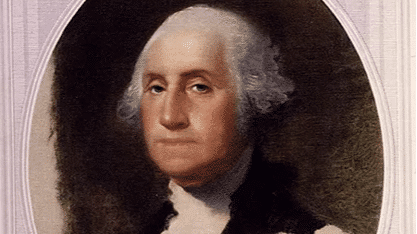On July 4,
1776, the Declaration of Independence was adopted by the second Continental
Congress meeting in Philadelphia as the 13 colonies – at war with Britain –
took the first step toward forming the United States of America. That day went
on to become America’s Independence Day, something made possible because of the
years of effort by people known as the ‘Founding Fathers’.
Essentially,
they were a group of leaders from who
united the 13 colonies, led the war of independence against the British and
formed the framework for the government, which continues to guide the country
even today.
Also Read | Movies to watch on the Fourth of July
There is no
agreement over who is considered a Founding Father, with some historians not agreeing
with the term altogether. However, they are largely considered to be the
leaders who initiated and led the war of independence as well as framed the Constitution.
With America
marking 245 years of independence this Sunday, let’s take a look at the most
influential of those leaders:
George Washington
George Washington once fought for the British, serving as a commander during the French and Indian
War. However, as a wealthy farmer in Virginia who owned hundreds of slaves,
Washington grew weary of the various taxes and restrictions imposed by the British.
He took
charge of the Continental Army when the Revolutionary War broke out in 1775. He
lost more battles than he won, but kept his troops together and with the help
of French allies, was able to defeat the British by 1783.
He
initially wanted to return to a life of farming after the war, but was convinced
to take up politics and in 1789, was overwhelmingly elected as the first
President of the United States.
Also Read | From Lincoln’s locks to Kennedy’s cardigan: Presidential artefacts on sale at auction
Benjamin Franklin
A polymath,
Benjamin Franklin was a scientist, writer, printer, inventor and diplomat and
was considered America’s foremost renaissance man of the period. He was
appointed to the five-member committee who drafted the Declaration of
Independence and then travelled to France to secure allies for the war.
He was also
instrumental in negotiating the Treaty of Paris in 1783, which officially ended
the American Revolutionary War. Apart from designing bifocals and trying to
harness electricity using kites, Franklin was known to work on a number of key
civic projects to improve the city of Philadelphia – where he lived, worked, died
and where his legacy still remains.
John Adams
Like
Franklin, John Adams served on the committee that drafted the Declaration of Independence,
journeyed to France to secure allies and helped negotiate the Treaty of Paris.
An eminent Massachusetts lawyer, Adams served as vice-president under Washington
and was elected to replace him after his two terms. He served as President from
1797 to 1801.
Also Read | 5 easily accessible weekend getaways for the 4th of July
Thomas Jefferson
Thomas
Jefferson was a Virginia lawyer and another member of the committee that
drafted the Declaration of independence, where he wrote, “all men are created
equal”. He served as vice president to Adams, with whom he shared a famous ‘feuding
friends’ relationship, before becoming the third American President.
In
striking coincidence, Jefferson died on the same day as Adams – on July 4,
1826, the 50th anniversary of the Declaration of Independence.
Alexander Hamilton
An orphan born
in the British West Indies, Alexander Hamilton emigrated to New York as a
teenager and rose to prominence as an aide to George Washington during the
Revolutionary War. He was one of the key contributors to the Federalist Papers,
which argued for the Constitution’s ratification.
Also Read | Fourth of July celebrations: What is happening and what is not?
He served
as the first US Treasury Secretary, during which time he pushed for the
creation of a national bank.
Other founders:
A number of
other leaders are also cited as founders, like John Jay – who helped negotiate
the Treaty of Paris; James Madison – who devised the plan of dividing the government
into the legislative, executive and judicial branches; Samuel Adams – a cousin
of John Adams who helped gather support for the revolution in Boston; John Hancock
– known for his stylish signature on the Declaration of Independence; George
Mason – who helped frame the Constitution but refused to sign it; Paul Revere –
whose famous ‘midnight ride’ warned the colonial militia of incoming Redcoats before the battles of Lexington and Concord; and others.







